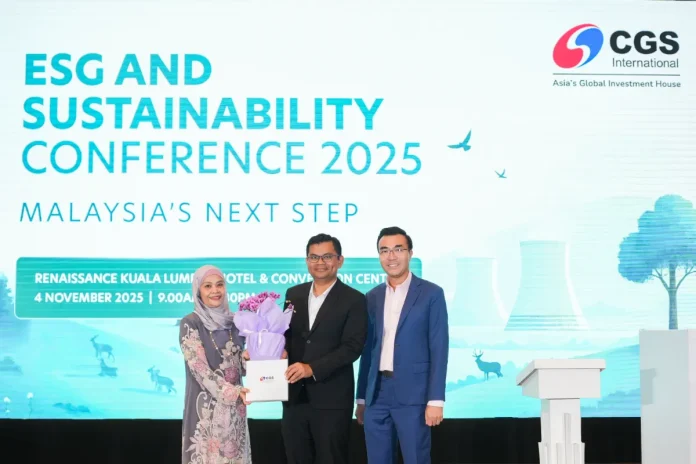KUALA LUMPUR: Malaysia’s next big leap in energy transition must begin with a firm grasp of the “energy trilemma”, which defines the balancing act involving three equally critical priorities.
Deputy Energy Transition and Water Transformation Minister Akmal Nasrullah Mohd Nasir said the three priorities are energy security – ensuring a reliable and sufficient supply to power the nation; energy affordability – keeping costs fair and equitable for households and industries; and energy sustainability – ensuring that Malaysia’s pursuit of growth does not compromise the nation’s environmental future.
He said this balance is central to Malaysia’s energy transition strategy, adding that how well the country maintains it will define the strength and staying power of the nation’s next leap forward.
“Malaysia stands at a critical juncture in its development. The coming decade will determine how effectively we transition from a fossil-fuel-dependent system towards a cleaner, more sustainable, and technologically advanced energy ecosystem.
“Through the National Energy Transition Roadmap, or NETR, the government has charted a decisive course to achieve 70% renewable energy in our installed capacity by 2050.
“This is not merely a numeric goal but a transformation blueprint that harmonises three guiding principles — energy security, affordability, and sustainability – which together form the foundation of our energy trilemma,“ he told delegates at the CGS International Securities Malaysia ESG and Sustainability Conference 2025 today.
He said Malaysia has introduced a series of key reforms that combine policy innovation with market confidence.
Initiatives such as the Corporate Green Power Programme and subsequently the Corporate Renewable Energy Supply Scheme now enable industries to source clean electricity directly.
At the same time, the Large-Scale Solar Petra 5+ tender has added 2,000 megawatts of new solar capacity, one of the largest expansions in Malaysia’s history.
Meanwhile, the Energy Exchange Malaysia, or Enegem, established a transparent and market-driven platform for renewable energy trading.
“These initiatives, collectively, reflect Malaysia’s determination to build an energy ecosystem that is not only clean but also investment-ready and globally competitive. Our transition is not about replacing one fuel with another, but about constructing a system that is diversified, reliable, and resilient against future shocks.
“Malaysia’s approach is to balance various technologies. From solar and hydropower to waste-to-energy facilities, green hydrogen, and advanced energy storage systems, while maintaining natural gas as a stabilising fuel during this transition phase,“ Akmal Nasrullah said.
Further, he noted that beyond these initiatives, the government has also recognised the need to explore nuclear energy as part of the country’s long-term strategy.
“Nuclear power, when developed responsibly and transparently, offers a low-carbon baseload option capable of complementing renewable energy sources and ensuring grid stability. The government has approved a comprehensive feasibility study on nuclear energy to assess Malaysia’s technical readiness, regulatory capacity, and societal acceptance.
“We recognise that nuclear is not an immediate solution, but rather a strategic preparation for the next generation, a signal that Malaysia’s energy future will be guided by pragmatism, scientific integrity, and long-term foresight,“ Akmal Nasrullah said.
A successful transition requires more than technology. It demands capital, skilful human capital and market confidence, he added.
“Financing the energy transition is a national imperative that will require the mobilisation of billions of ringgit over the next few decades. The collaboration between the public and private sectors must therefore deepen, with the government providing the policy certainty and enabling frameworks, while the private sector drives innovation, project delivery and green financing,“ he said.
Regionally, Akmal Nasrullah noted that Malaysia, through its Asean chairmanship in 2025, is championing the Enhanced Asean Power Grid Memorandum of Understanding, which will allow member states to advance cross-border power trade and accelerate renewable energy integration across the region.
He said the Asean Power Grid embodies a collective vision of energy interconnectivity, security and inclusivity.
“It is not just an infrastructure project, but a symbol of shared prosperity — one that ensures Asean’s energy transition benefits all members equitably while reinforcing our region’s standing as a global growth hub,“ Akmal Nasrullah said.
At the 43rd Asean Ministers on Energy Meeting, held recently in Kuala Lumpur and chaired by Deputy Prime Minister and Energy Transition and Water Transformation Minister Datuk Fadillah Yusof, Asean member states set their ambitious regional targets: a 40% reduction in energy intensity, a 30% renewable energy share in total primary energy supply, and a 45% renewable energy share in installed power capacity by 2030.
These regional targets, Akmal Nasrullah said, strengthen the foundation for an integrated Asean power market that will support national ambitions while fostering regional sustainability and investment.
The third annual ESG and Sustainability Conference 2025, themed “Malaysia’s Next Step”, brings together policymakers, industry leaders, and sustainability experts to discuss action plans to accelerate Malaysia’s transition towards a net-zero economy by 2050.
The event also saw the official launch of the “Thematic Report on Nuclear for Malaysia’s Energy Transition”, jointly developed by CGS International Securities Singapore Pte Ltd and Panmure Liberum, a leading UK-based independent investment bank.







